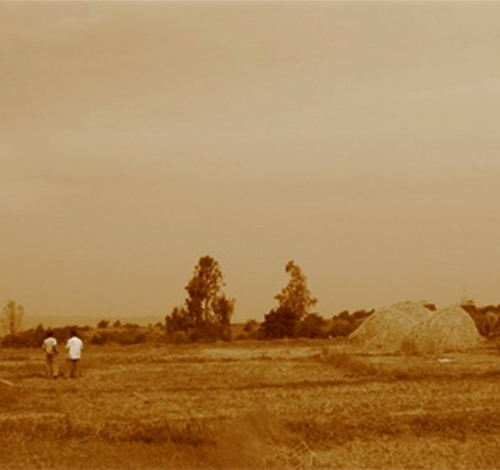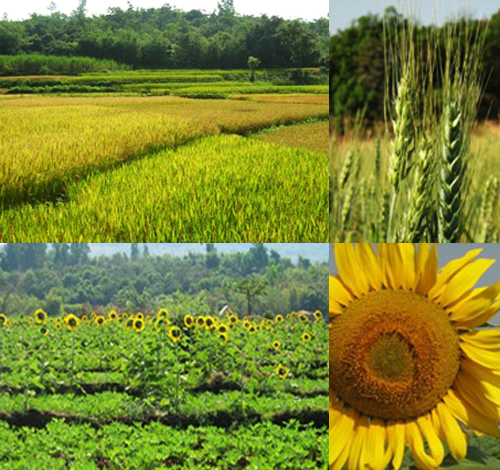Our Project Vision And Approach For Ramanwadi
Venu-Madhuri’s constructive plans for Ramanwadi are – to work towards development of Ramanwadi and its community into a self-sufficient unit, which will serve as a model for other villages to follow.
Venu-Madhuri’s emphasis will be on providing relevant education, training, know-how, inspiration, counseling and other need-based services.
Thus Venu-Madhuri’s role will be that of social catalyst, stimulating and encouraging the villagers not only as beneficiaries but to be partner, in all developmental activities.
Through the “people’s participation” approach, Venu-Madhuri will initiate “for-the-people, by-the-people “developmental projects.
Back Ground
Village Ramanwadi (56 houses with 360 heads) comes under heavy rainfall area (Average rainfall 3818 mm, with 120 rainy days) is situated on Sahyadri ranges (Western Ghats). Ramanwadi is located off the road in isolated forest region where the basic facilities like road, health center, secondary education, market are still missing. For basic requirement like matchstick or salt villagers, walk three km down and up the hill. Several cases of emergency pregnant ladies being carried through bullock cart got delivered in the cart causing fatal treat to baby and mother.
The paradox
is Ramanwadi although located in heavy rainfall area faced water crises for drinking during March to May and for irrigation for eight months of non-monsoon. Monsoon based agriculture by growing paddy and finger millet was part source of sustenance. Other than the 4 months of monsoon based agriculture, for livelihood villagers use to depend on forest by collecting non-timer forest produce or fuel wood and timber for the industrial need. The family head use to migrate for work as labor on power loom at Ichalkaranji (85 km from Ramanwadi). One of the prominent reasons for the water crises is heavy deforestation of the area. Forest cover always acts as sponge for holding water and binding soil together. Many villagers use to do illegal timber cutting as a source of livelihood
Situation before

When we adopted Ramanwadi village a benchmark survey was carried to note the situation and to plan strategy at Ramanwadi. Areas analyzed were water, health, economics, agriculture, animal husbandry, education, environment and social conditions. Our area wise survey findings were highly alarming as briefly mentioned below
Water :
Ramanwadi receives an average of 4000 to 4500 mm of annual rainfall, yet the paradox at Ramanwadi and other villages was water scarcity for agriculture after November and drinking water scarcity March onwards.
Economics :
The water scarcity for agriculture had led villagers either to migrate to city for livelihood or work as labor on others farms at distant place or depend on forest resource.
Environment :
Degradation of reserve forest was rampant as that’s was only source for livelihood generation for several families.
Health :
90% plus school going children were malnourished. For higher secondary education kids were forced to walk 8 to 10 km through rough terrain. Youth and elders were in strong grip of harmful addictions.
Cattle :
Villagers had left their cattle unattended in reserve forest because of its unproductive use.
Social :
Fight over water, caste and politics were extremely high at Ramanwadi leading to frequent complains at police station.
Agriculture :
Villagers were only able to practice monsoon farming for four months. The use of chemicals in farms had already made a way. Levels of soil erosion were noted very high.
Situation now

Venu Madhuri with villagers completed three projects. First one was a percolation tank on a stream in 2003, and two irrigation projects in 2004 and 2006.
As a result of the work today Ramanwadi has 50 acres of land under perennial irrigation. The irrigation projects have benefitting 40 families.
In 2004 the sugarcane production of whole Ramanwadi village was 75 tones and in 2009 the production of sugarcane was 700 tones (at Rs 2000/tone in 2009).
Sugarcane cutting labor of worth Rs 80,000 is generated every year at village. With sugarcane villagers grow oilseeds, vegetables, and millets for personal consumption and surplus goes for market sale.
Irrigation project has changed the economy of the region. Details of our projects -
Project-I :
The first project was completed in 2004. In which a perennial stream was tapped and the water is channelized through a three inch PVC pipe of 2700 feet length.
Project-II :
After the success of first project, the second project was planned on the same principles and got completed in 2006. 9500 feet PVC pipeline of 4 inch diameter was laid to carry water from perennial stream.
Our KRA (Key Result Areas)
We promote traditional and efficient natural irrigation systems and watershed management programs.
We help to preserve and protect by various pure, indigenous breeds of cattle, particularly ones that are currently endangered.
We Encourage and train villagers and rural communities into development of various traditional skills, sciences, arts and craft.
We promote traditional principles of organic farming using animal power and simple traditional technologies.
We help preserve the distinctive cultural identity of rural communities by encouraging various traditional forms of culture-arts, crafts, music, drama and festivals.
We impart knowledge of traditional sciences in different areas, value based character-building education to students.
We implement proper system of hygiene and sanitation, waste recycling. Encourage rural communities to practice the art of natural, healthy living avoiding destructive addictions and habits.